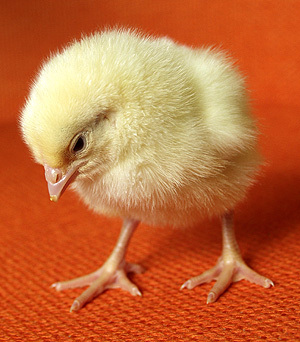The U.S. Centers for Disease Control reports that in early 2013, four clusters of human Salmonella infections were identified through PulseNet, the national molecular subtyping network for foodborne bacteria. Many of the ill persons in these four clusters reported contact with live poultry, primarily chicks and ducklings, from a single mail-order hatchery; therefore, these investigations were  merged. During March 4–October 9, 2013, a total of 158 persons infected with outbreak strains of Salmonella serotypes Infantis, Lille, Newport, and Mbandaka were reported from 30 states.
merged. During March 4–October 9, 2013, a total of 158 persons infected with outbreak strains of Salmonella serotypes Infantis, Lille, Newport, and Mbandaka were reported from 30 states.
Forty-two percent (65 of 155) of ill persons were aged ≤10 years, and 28% (29 of 103) were hospitalized; no deaths were reported. Eighty-six percent (80 of 93) of ill persons who were interviewed reported live poultry contact in the week before illness onset. Sixty-nine percent (44 of 64) of ill persons who completed a supplemental live poultry questionnaire reported chick exposure, and 40% (26 of 64) reported duckling exposure. Seventy-five percent (33 of 44) of respondents reported live poultry exposure at their home; 59% (26 of 44) specifically reported keeping poultry inside their home.
Of the 40 ill persons who had recently purchased young poultry, the average time from purchase of poultry to illness onset was 21 days (range = 2–52 days); 48% (19 of 40) ill persons reported illness onset within 2 weeks of poultry purchase. Among persons with purchase information, 94% (62 of 66) reported buying young poultry sourced from a single mail-order hatchery in Ohio.
This outbreak investigation identified an Ohio hatchery as the likely source of the outbreak. This hatchery previously has been linked with multiple, large human Salmonella outbreaks. These recurring outbreaks highlight the need for comprehensive Salmonella prevention and control programs to be implemented and maintained at this mail-order hatchery and its associated breeder farms. Mail-order hatcheries and their source flocks should comply with management and sanitation practices outlined by the U.S. Department of Agriculture’s National Poultry Improvement Plan.
Additional owner education is necessary because healthy birds can still transmit Salmonella to humans. Educational material warning customers and advising them on how to reduce the risk for Salmonella infection from live poultry should be distributed by farm/feed stores and mail-order hatcheries with all live poultry purchases.

.jpg) chicks and ducklings to an unnamed nationwide agricultural feedstore.
chicks and ducklings to an unnamed nationwide agricultural feedstore. and ducklings to an unnamed nationwide agricultural feedstore.
and ducklings to an unnamed nationwide agricultural feedstore. The cases of salmonellosis occurred from late March through late May, the department said, adding that those falling ill were ages 5 months to 70 years old.
The cases of salmonellosis occurred from late March through late May, the department said, adding that those falling ill were ages 5 months to 70 years old..jpg)